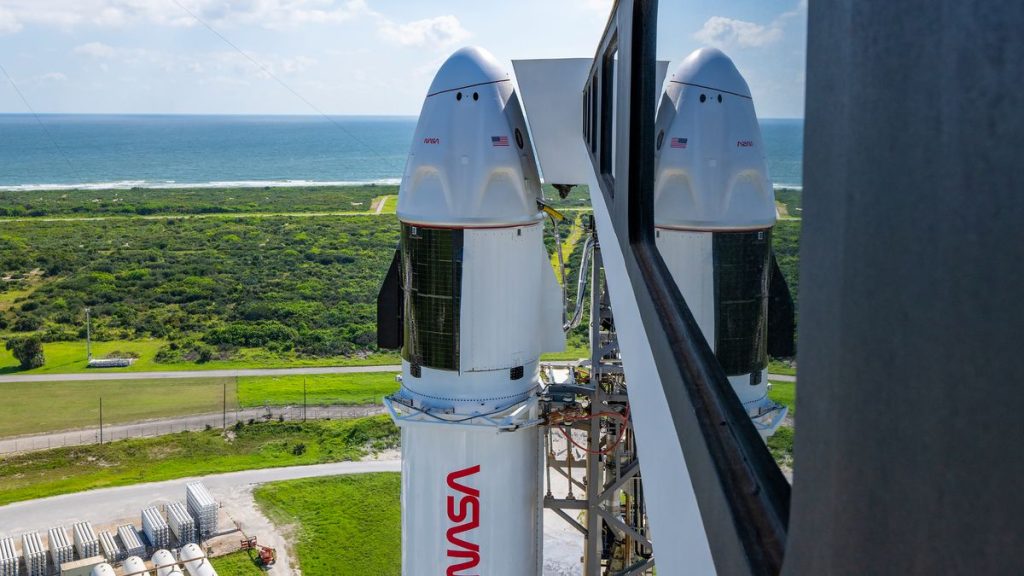SpaceX’s next astronaut mission has been delayed by a powerful storm.
The company had been planning to launch the Crew-9 mission to the International Space Station (ISS) for NASA from Florida’s Cape Canaveral Space Force Station on Thursday afternoon (Sept. 26).
However, that target date has slipped by at least two days, thanks to a maelstrom named Helene. Helene is a tropical storm at the moment, but it’s expected to slam into Florida’s Gulf Coast on Thursday as a Category 3 hurricane. Thus, NASA and SpaceX now aim to launch Crew-9 on Saturday (Sept. 28) at the earliest. Liftoff that day would be at 1:17 p.m. EDT (1717 GMT).
“Although Tropical Storm Helene is moving through the Gulf of Mexico and expected to impact the Florida panhandle, the storm system is large enough that high winds and heavy rain are expected in the Cape Canaveral and Merritt Island regions on Florida’s east coast,” NASA officials said in an update this afternoon (Sept. 24).
Crew-9’s Falcon 9 rocket and Crew Dragon capsule, named Freedom, rolled out to the launch pad today. Mission team members will conduct rehearsal activities with the hardware tonight, then roll the rocket-capsule combo “back to the hangar ahead of any potential storm activity,” NASA officials wrote.
Crew-9 will send NASA’s Nick Hague and Russian cosmonaut Aleksandr Gorbunov to the ISS. They’ll live on the station for about five months, coming home in February 2025.
Crew Dragon capsules usually carry four people to the orbiting lab, but NASA is saving two seats on Freedom for astronauts Suni Williams and Butch Wilmore, who need a ride back to Earth.
Williams and Wilmore arrived at the ISS in June on the first-ever crewed flight of Boeing’s Starliner capsule. That mission was supposed to last just 10 days or so, but after Starliner experienced thruster problems in orbit, NASA extended the capsule’s ISS stay while studying the issue. The agency ultimately decided to bring Starliner home uncrewed, which occurred without incident on Sept. 7. Williams and Wilmore remain aboard the ISS; they’ll end up spending about eight months in orbit, if all goes according to plan.
Related: Meet the SpaceX Crew-9 astronauts launching to the International Space Station Sept. 26
As its name suggests, Crew-9 will be the ninth operational astronaut mission SpaceX launches to the ISS for NASA. Elon Musk‘s company has six other crewed flights under its belt as well — a test mission to the station for NASA in 2020, three private flights to the ISS and two commercial efforts that circled Earth solo.
Like SpaceX, Boeing holds a contract with NASA’s Commercial Crew Program. It’s unclear, however, when the aerospace giant will launch its first long-duration crewed flight to the ISS, given the issues that Starliner experienced on the recent test flight.

